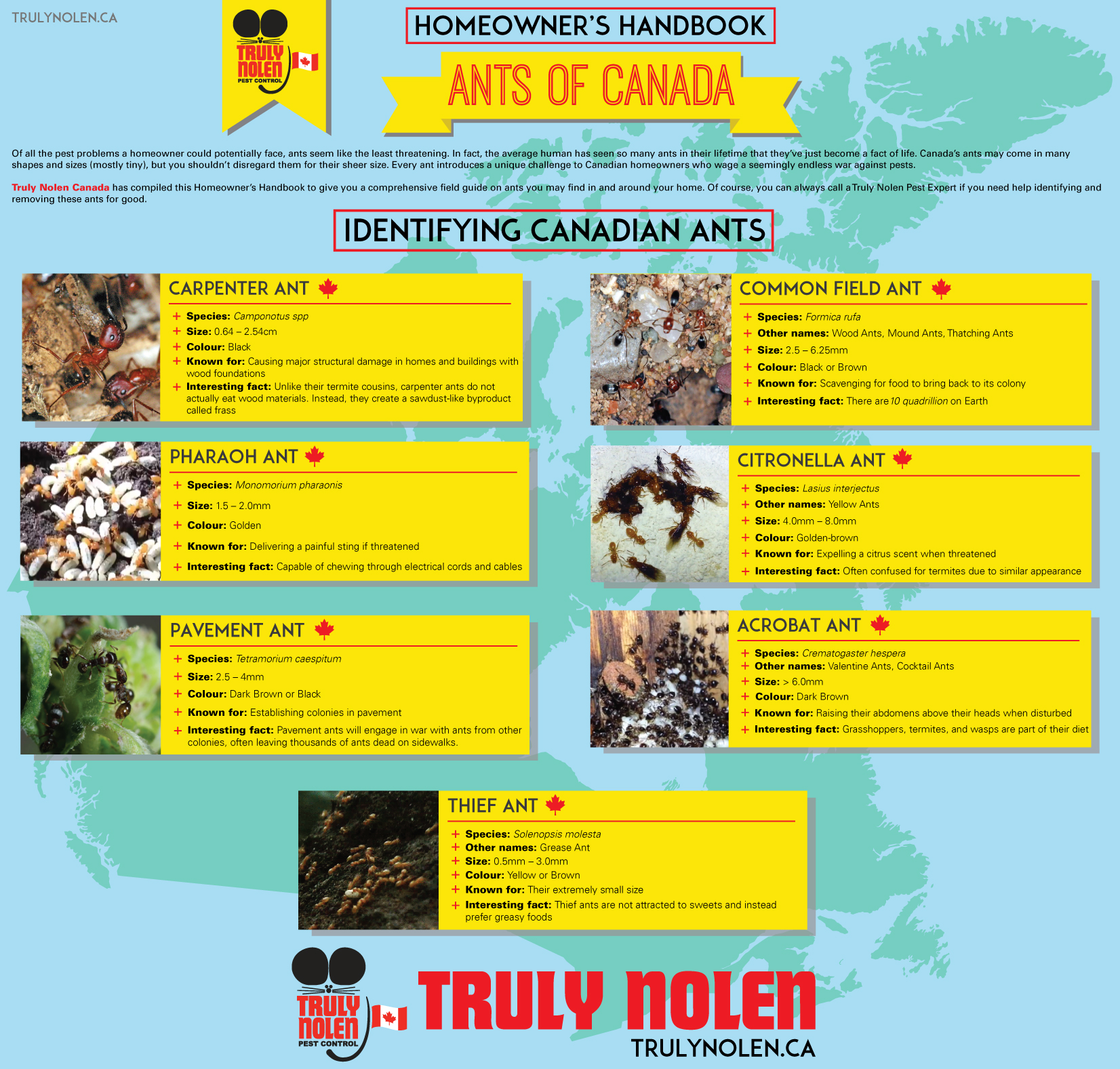 Of all the pest problems a homeowner could potentially face, ants seem like the least threatening. In fact, the average human has seen so many ants in their lifetime that they've just become a fact of life. Canada's ants may come in many shapes and sizes (mostly tiny), but you shouldn't disregard them for their sheer size.
Every ant introduces a unique challenge to Canadian homeowners who wage a seemingly endless war against pests. Truly Nolen Canada has compiled this Homeowner's Handbook to give you a comprehensive field guide on ants you may find in and around your home. Of course, you can always call a Truly Nolen Pest Expert if you need help identifying and removing these ants for good.
Of all the pest problems a homeowner could potentially face, ants seem like the least threatening. In fact, the average human has seen so many ants in their lifetime that they've just become a fact of life. Canada's ants may come in many shapes and sizes (mostly tiny), but you shouldn't disregard them for their sheer size.
Every ant introduces a unique challenge to Canadian homeowners who wage a seemingly endless war against pests. Truly Nolen Canada has compiled this Homeowner's Handbook to give you a comprehensive field guide on ants you may find in and around your home. Of course, you can always call a Truly Nolen Pest Expert if you need help identifying and removing these ants for good.
 Of all the pest problems a homeowner could potentially face, ants seem like the least threatening. In fact, the average human has seen so many ants in their lifetime that they've just become a fact of life. Canada's ants may come in many shapes and sizes (mostly tiny), but you shouldn't disregard them for their sheer size.
Every ant introduces a unique challenge to Canadian homeowners who wage a seemingly endless war against pests. Truly Nolen Canada has compiled this Homeowner's Handbook to give you a comprehensive field guide on ants you may find in and around your home. Of course, you can always call a Truly Nolen Pest Expert if you need help identifying and removing these ants for good.
Of all the pest problems a homeowner could potentially face, ants seem like the least threatening. In fact, the average human has seen so many ants in their lifetime that they've just become a fact of life. Canada's ants may come in many shapes and sizes (mostly tiny), but you shouldn't disregard them for their sheer size.
Every ant introduces a unique challenge to Canadian homeowners who wage a seemingly endless war against pests. Truly Nolen Canada has compiled this Homeowner's Handbook to give you a comprehensive field guide on ants you may find in and around your home. Of course, you can always call a Truly Nolen Pest Expert if you need help identifying and removing these ants for good.

